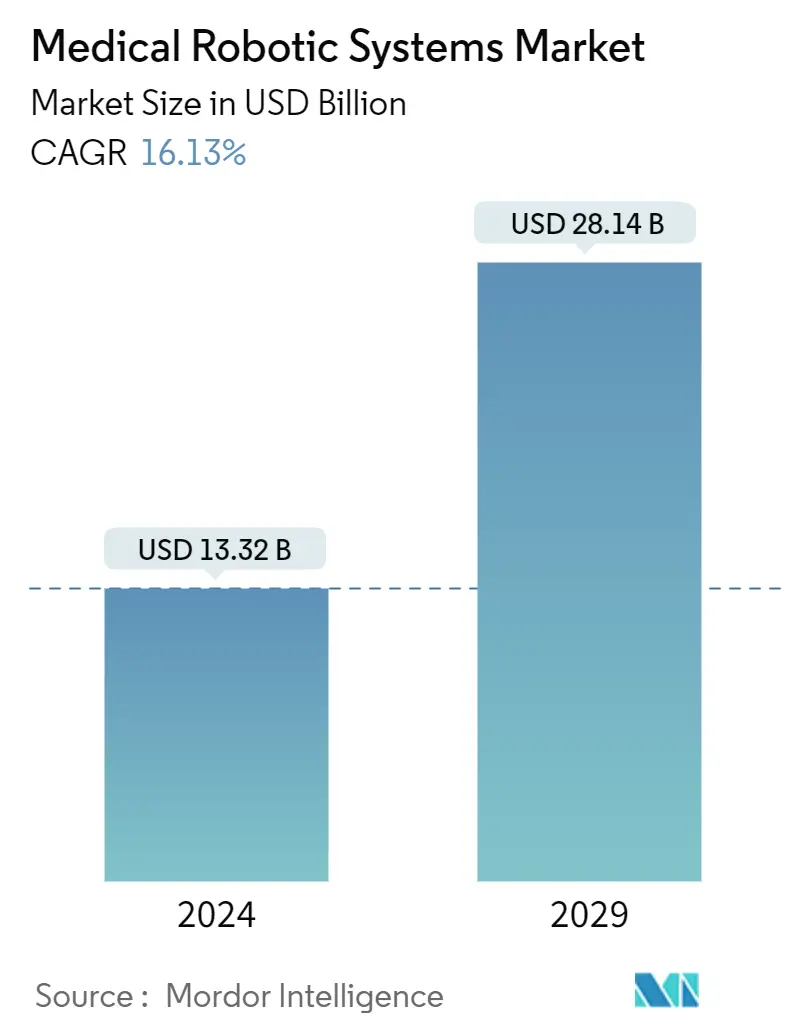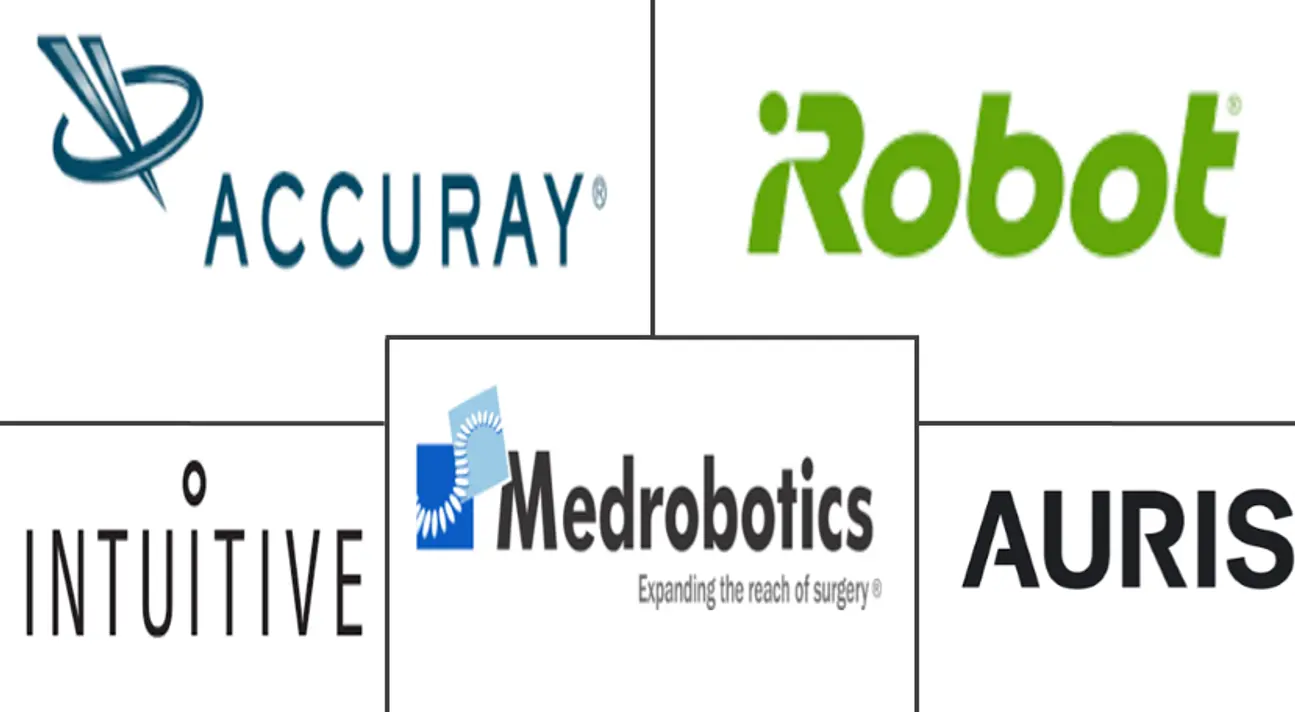Market Size of Medical Robotic Systems Industry

| Study Period | 2019 - 2029 |
| Market Size (2024) | USD 13.32 Billion |
| Market Size (2029) | USD 28.14 Billion |
| CAGR (2024 - 2029) | 16.13 % |
| Fastest Growing Market | Asia Pacific |
| Largest Market | North America |
Major Players
*Disclaimer: Major Players sorted in no particular order |
Need a report that reflects how COVID-19 has impacted this market and its growth?
Medical Robotic Systems Market Analysis
The Medical Robotic Systems Market size is estimated at USD 13.32 billion in 2024, and is expected to reach USD 28.14 billion by 2029, growing at a CAGR of 16.13% during the forecast period (2024-2029).
The public's perception of medical robots in senior living facilities has improved over the last few years. One of the key initiatives that could lower the number of ER visits brought on by accidental falls and increase the accessibility and affordability of at-home care is the implementation of robotic care.
With the rising number of surgical procedures in the geriatric population and mounting cases of trauma injuries, the demand for accurate and proper laparoscopic surgeries and medical procedure solutions has been increasing. As a result, robot-assisted surgery has quickly expanded due to growing opportunities for minimally invasive surgery across the surgical domains. As robotic surgery approaches a decade of commercial use, the market is diversifying, and novel surgical modalities with the new technology decreased costs, and smaller sizes are becoming available.
For instance, medical robots have also increased for intervention and diagnostic purposes. Recent years have also witnessed the application area of robotics and automation solutions extending to medical/pharmaceutical research laboratories, where they are increasingly being used to automate manual, repetitive, and high-volume tasks so scientists and technicians can focus their attention on more strategic tasks to ensure discoveries happen faster.
For a significant period, intuitive surgical procedures have dominated the robotic surgical market and maintained a considerable market share. With original da Vinci patents expiring, the stage is set for an exponential increase in automatic system development. The newer systems seek to improve the da Vinci model through three main avenues: novel technology, reduced cost, and size reduction.
Furthermore, US and European hospitals have rapidly adopted robotic surgery to treat various conditions. One of the most widely used clinical robotic surgical systems includes mechanical and camera arms with surgical instruments attached. Examples of robot-assisted procedures include biopsies, removal of cancerous tumors, repairing heart valves, and gastric bypasses.
Despite all these benefits, factors such as a higher adoption cost, a lower awareness, especially in developing regions, and a lack of technical expertise to operate robotic medical systems are among the significant factor challenging the growth of the studied market.
Due to the significant risk that COVID-19 poses to surgeons, various surgical associations developed safety recommendations for these procedures in the present pandemic. Robots can be included in different parts of the sequence that each surgical patient travels through during their hospital stay to successfully prevent the spread of pathogens. As a result of the greater exposure the pandemic has provided and the benefits these systems offer, the adoption of robotic medical systems is anticipated to grow further during the forecast period.
